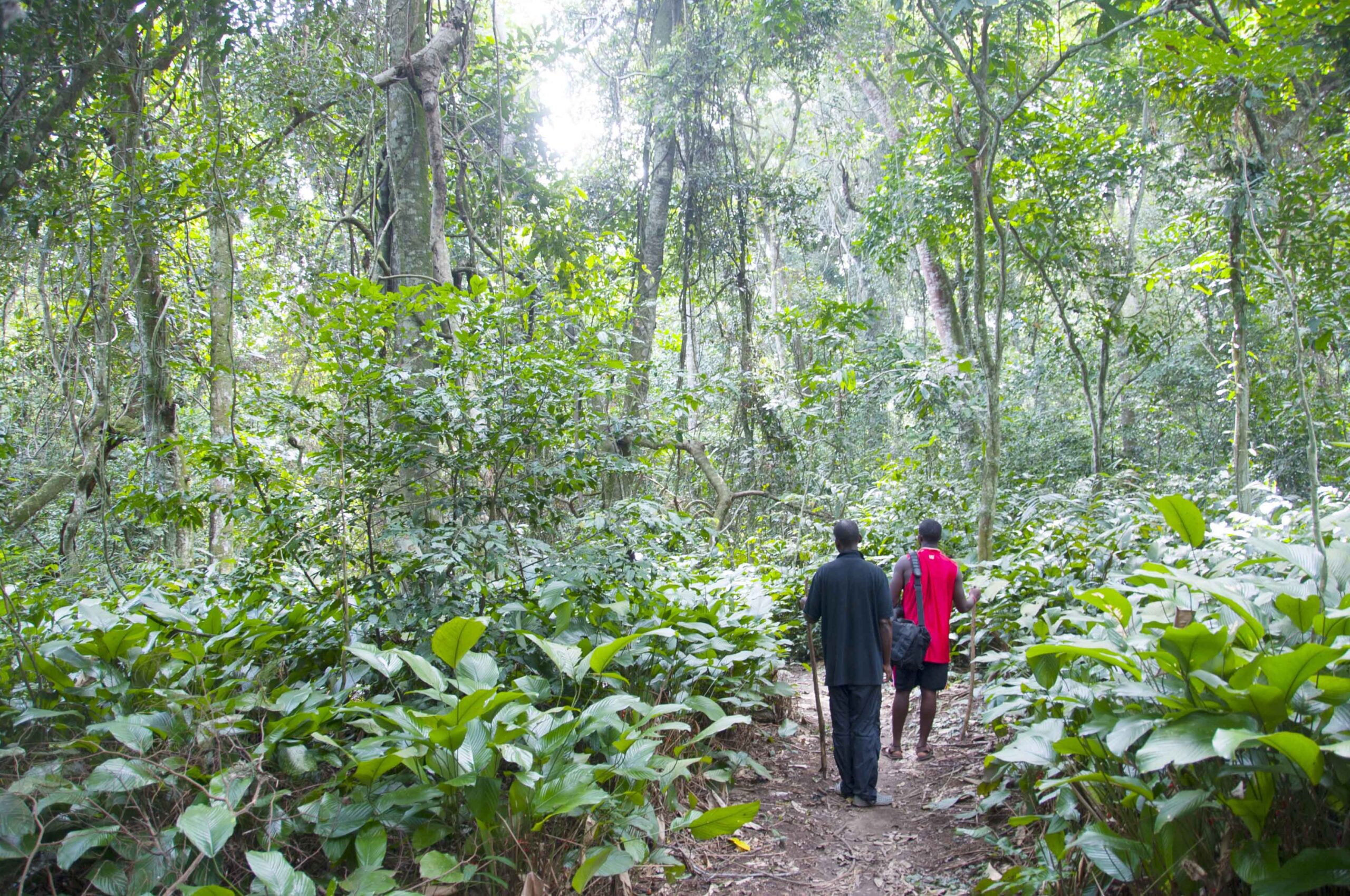By Kalungi Kabuye
Getting to the Ssese Islands is very easy these days, one is almost spoilt for choice. There is the ferry, MV Kalangala, which leaves Entebbe every day at 2 pm, and gets to Kalangala (the district capital on the largest of the islands, Bugala) at about 5 pm. The next day it leaves at 8 am for Entebbe. It is public transport, although you have to pay a token fee of UGX15,000. It carries both passengers and vehicles.
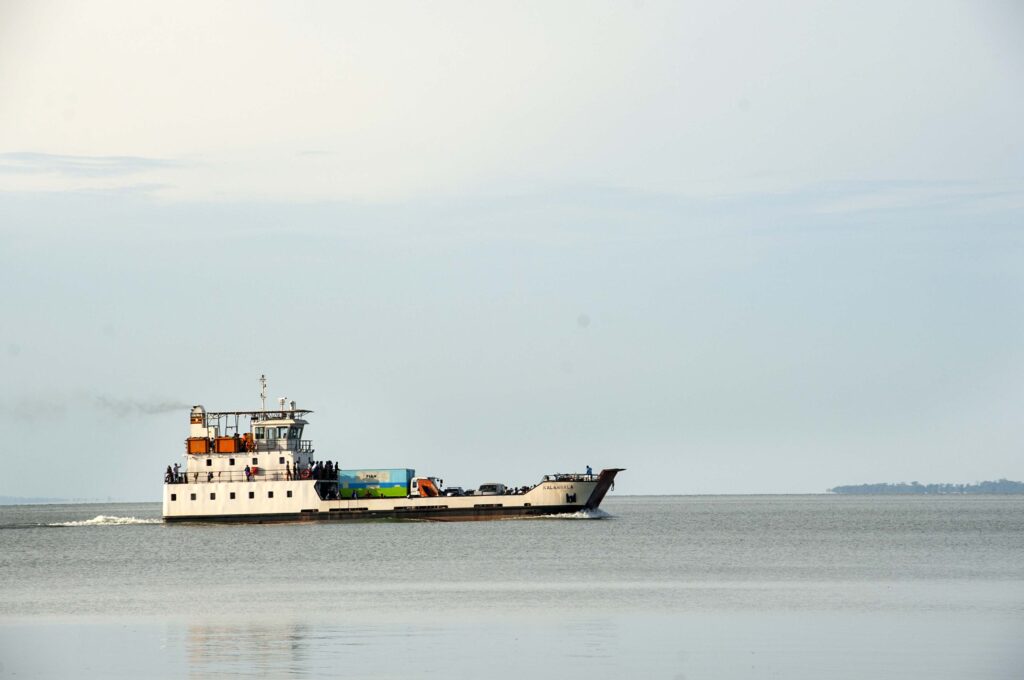
There are also private, luxury boats, the MV Vanessa and MV Natalie, which cut the journey almost in half, but are much more expensive at UGX100,000. They don’t carry vehicles.
You can also opt to use the Masaka route, where you drive the 2 or so hours to Bukakata, get on a ferry that 45 minutes later deposits you on the western side of the island. Then you drive the length of the island to Kalangala town.
But the first time I went to Ssese, in the late 1990s, there was nothing like that. The Bukakata ferry was there, but the only transport out of Entebbe was an old converted fishing trawler. I was told that it used to ply its trade on the Black Sea, but we never got the story of how it ended up on Lake Victoria.
Ssese was a real getaway those days, almost virgin, one can say. There were no bodas, so one had to walk anywhere they wanted to go. There was no electricity, either. So when the generators shut down, so did life on the islands.
The ‘resorts’ were family-run affairs, and were known by the names of the families that owned them. Thus the Kikomekos, the Kimbugwes, and the Takkas. Somehow I struck up a close relationship with the Kimbugwes, and that is where I stayed for all my subsequent visits. Sadly Mr and Mrs Kimbugwe are now in their twilight years, and cannot run the place effectively. Since the kids have other vocations, a piece of Ssese history is dying as we speak.
The forests were also largely intact, and the drive from Bugoma where the Masaka ferry docks to Kalangala was like something out of a National Geographic documentary. Sadly a great part of the forest cover has been cut down, and there might be more palm trees planted by the Bidco company to make oil than forests.
Not many people visited then, and the visitors’ books at the ‘resorts’ were proudly displayed to show who had been there. The telecoms had not reached the islands yet, either, so no mobile phones. So when you went to Ssese you were literally off the grid.
I was lucky to have seen it in that state, and I don’t begrudge the thousands who have recently discovered Ssese and decided a weekend away in the islands is a lifesaver. Resorts have mushroomed all over the place, there is electricity and running water, and there is a chance some unruly boda boda rider could run into you.
But for all that, Ssese is probably Uganda’s last tourism frontier. There is more to Ssese than just the beaches, although most Ugandans would be surprised to learn that.
The beaches
This is where most Ugandans stop when they go to Ssese Islands, and it is common to have large groups travel with their own disco equipment and have a party on the beaches for several days (sound carries very easily across water, so even folks on the far side might think the party is next door). Unlike the mainland beaches, these are almost pristine and the water looks clean.
Most of the popular ‘resorts’ are built on Lubotoka bay, and if you’re lucky and the lake levels are low it is possible to walk from one end of the bay, where the Victoria Forest Resort is, to the modern-looking Brovad Sands Lodge, a distance of almost 5 Kilometres of pure white sand. An evening walk on the beach as the sun is setting is popular with visitors. Many of the resorts also organise bonfires for their guests at night, and you can choose to have your meals at the beach or relax with a book.
Speke’s Fort and forest walks
On top of a hill in the Kasese forest are the ruins of what the islanders say was a fort built by John Speke during his search for the source of the River Nile. It can get confusing because there is sign welcoming you to the ‘Henry B. Stanley Fort, 1875’. An over enthusiastic student of tourism took it upon himself to put up the sign, but he got both the name and the date wrong because Speke published his account of the search for the Nile in 1863.
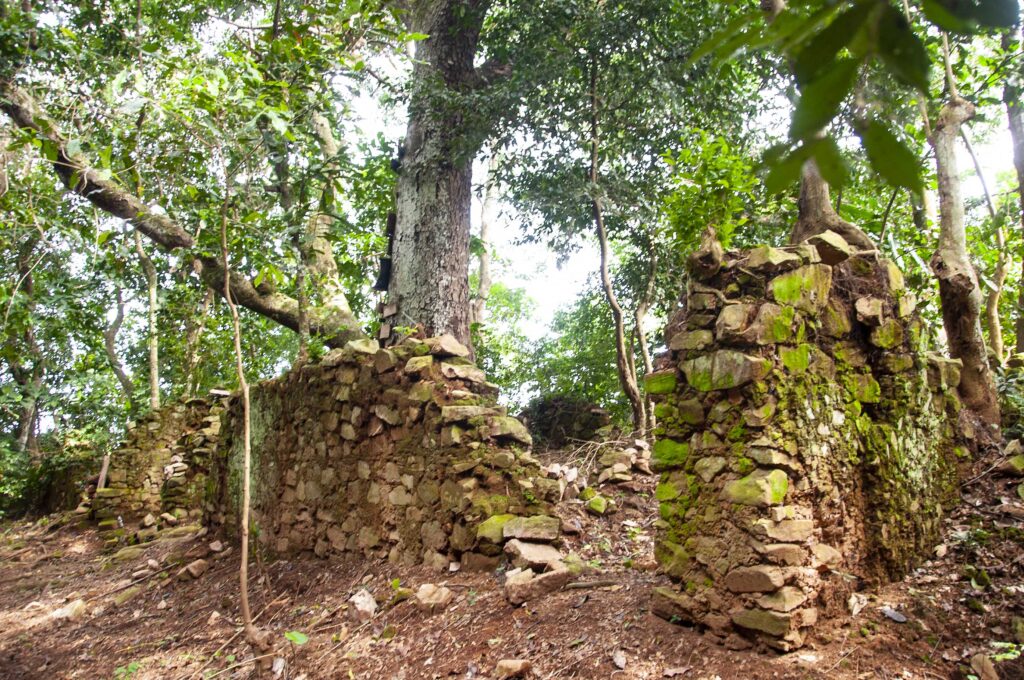
To make it worse within the ruins there is a big tree, and people have taken it upon themselves to attach large notices that they were there, including a Minister for Tourism. They forget the basics of tourism that you’re supposed to leave sites as they are, and not pollute them with our passage. Any organised Tourism office would no doubt remove those offending signs without haste.
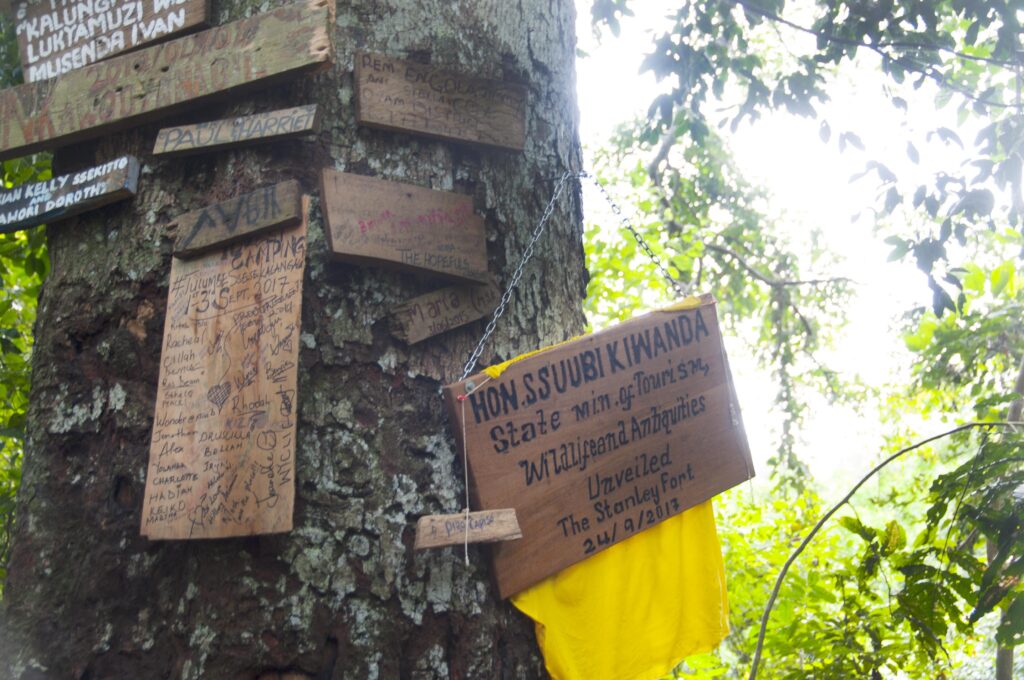
Getting to the fort you pass through a typical tropical forest named Kaseese, with huge trees that look very old, and this serves as one of the tourist attractions. The locals insist that the spirit of the forest often appears as a beautiful young woman, or as a huge snake, and one has to stop and let it pass. They also say the trees are harder than mahogany.
Mapeera landing site
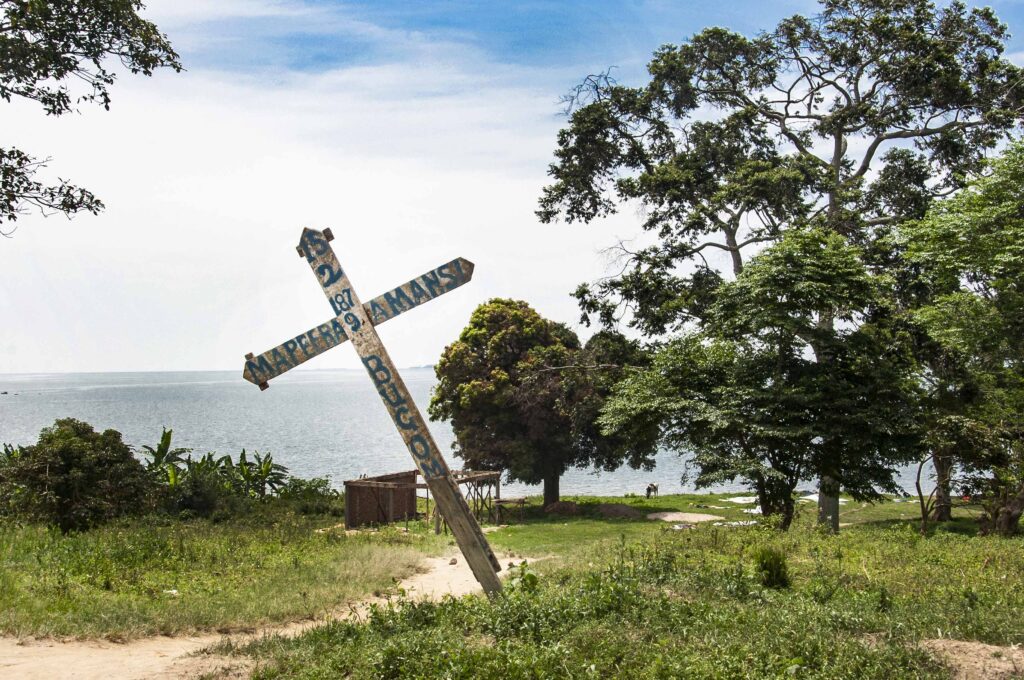
The man who brought the Catholic faith to Uganda, Fr Simeon Lourdel, is said to have landed on the southern side of the island from Tanzania, before proceeding to the court of Buganda. Together with Brother Amans, the two landed on February 15th, 1879, and rested for a day before continuing their journey. The site has since become part of the Martyr’s Trail, and every February a pilgrimage is made to that spot, which is marked by an old wooden cross. A church was built on the hill above, and the time I was there beginnings of what is supposed to be a museum can be seen near the water. All this was told to us by fishermen repairing their nets and boats.
The palm oil project
When the idea to establish a palm oil project on Bugala Island was first mooted, there were objections from many, especially environmental groups that feared deforestation as palm tree plantations replaced indigenous forests. Currently, about 10,000 hectares are planted with palm trees by Oil Palm Uganda Limited, a subsidiary of Bidco. Ironically, the palm oil factories have become of a tourist attraction, too.
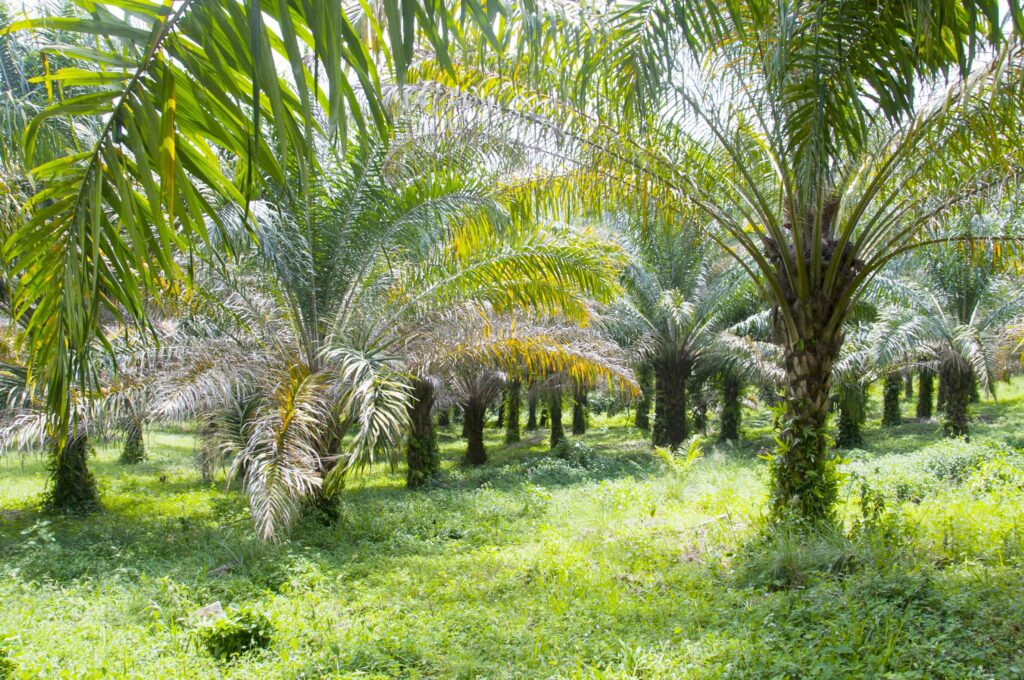
Bukasa Island and Nanziri Falls
Another popular destination, although a bit off the beaten track, is Bukasa Island, another relatively large island. Some claim it is more picturesque than Bugala, and the Nanziri Falls are a particular attraction. You access it via a speed boat from Bugala Island.
There is also a boat ride to the Virgin Island, called that because efforts are being made to eliminate any man-made influence. No fishing or activity of any sort is allowed on that island.
Cultural sites
The Ssese islands play a very important role in the culture of Buganda kingdom and its people, and it is claimed that all of the clans of Buganda have their origins in these islands. It is also said that the ancient people of Ssese had supernatural powers, and many kings of Buganda would seek their help, especially in times of war. Thus many of the sites on the cultural trail are linked with the supernatural.
A short Boda boda ride from Kalangala town is the Luggo forest, the source of the Katikiro of Buganda’s Damula, or mace, the instrument of power. There are also caves which still see regular traffic of people seeking the favour of traditional spirits. No shoes are allowed in there, and no photographs either.
What to do
Apart from the usual tourist sites, visitors to Ssese Islands have a choice of several activities, including quad-bike riding, beach hopping, boat racing and sport fishing. There is also a golf course, although all the times I have been there I have never seen anybody playing golf.

